- No products in the cart.
Medisorb ibuprofen 200mg capsules 20 pieces
$3.68
Medisorb ibuprofen 200mg capsules 20 pieces
Description
Composition
Active substance:
1 capsule contains: 200 mg of ibuprofen.
Excipients:
Croscarmellose sodium 28 mg; Talc 4.8 mg; Magnesium stearate 2.4 mg; Aerosil (colloidal silicon dioxide) (A-380) 4.8 mg; composition of hard gelatin capsules № 1: gelatin, water, titanium dioxide, iron oxide yellow, indigo carmine.
Description:
Hard gelatin capsules № 1 white with green lids containing a powder of white or white color with a yellowish tinge.
Product form:
Capsules 200 mg.
10 capsules in blisters.
20, 30, 50 or 100 capsules in polymeric jars.
Each bank or 1, 2, 3, 5, 10 contour cell packages together with instructions for use placed in a pile of cardboard boxed.
Contraindications
-giperchuvstvitelnost to ibuprofen (including history) and / or any of the components; – erosive-ulcerous lesion of the intestine (including gastric ulcer and duodenal ulcer (DU) in the acute stage, active gastrointestinal bleeding, inflammatory bowel disease (Crohn’s disease, ulcerative colitis exacerbation); – complete or incomplete combination of asthma, recurrent nasal polyposis and paranasal sinuses and the intolerance of acetylsalicylic acid (ASA) and / or other NSAIDs (including history) – hemodyscrasia unknown etiology – blood coagulation disorders (including hemophilia, udli nenie bleeding time, bleeding tendency, hemorrhagic diathesis) – or other cerebrovascular bleeding (including intracranial haemorrhage), – severe renal failure (less than 30 ml / min creatinine clearance); progressive renal disease; – confirmed by hyperkalemia; – severe hepatic failure and / or active liver disease; – since the aortocoronary bypass surgery; – severe heart failure, decompensated heart failure; – Children up to age 6 years;
Carefully
Chronic heart failure (CHF); arterial hypertension; Coronary heart disease (CHD); cerebrovascular diseases; dyslipidemia / giperlipi-Academy for; diabetes; peripheral artery disease; cirrhosis with portal hypertension; a history of liver disease; hepatic porphyria; hyperbilirubinemia; gastric ulcer and duodenal ulcer (in history); gastritis; enteritis; colitis; liver and / or renal failure with a creatinine clearance of 30-60 ml / min; nephrotic syndrome; the presence of Helicobacter infection Pulori; Long-term use of NSAIDs and concomitant use of other NSAIDs; severe somatic disorders; simultaneous reception of oral glucocorticosteroid drugs (including prednisone), anticoagulants (including warfarin), antiplatelet agents (including ASA and clopidogrel), selective serotonin reuptake inhibitors (SSRIs) (including citalopram, fluoxetine, paroxetine, sertraline); blood disease of unknown etiology (leukopenia and anemia), coagulation disorders, systemic lupus erythematosus (SLE), systemic connective tissue disease; a significant reduction in circulating blood volume (including surgery); and in patients suffering from bronchial asthma, hay fever, nasal polyps or chronic obstructive pulmonary disease; advanced age (over 65 years), children 6 – 12 years old; smoking; Frequent use of alcohol.
Dosage
200 mg
Indications
Symptomatic treatment: – pain of mild to moderate severity of various etiologies (headache, migraine, toothache, neuralgia, postoperative pain, posttraumatic pain, painful menstruation, myalgia, revmatichekie pain joints and spine (rheumatoid arthritis, ankylosing spondylitis, osteoarthritis, gouty arthritis) – fevers with influenza and colds.
The drug is intended for the symptomatic therapy reduce pain and inflammation at the time of use, does not affect the progression of the disease.
Interaction with other drugs
While the use of ibuprofen inductors microsomal oxidation (phenytoin, ethanol, barbiturates, rifampicin, phenylbutazone, tricyclic antidepressants) increase the production of hydroxylated active metabolites, increasing the risk of severe hepatotoxic reactions.
While the use of inhibitors of microsomal oxidation ibuprofen reduce the risk of hepatotoxicity.
When applied simultaneously reduces ibuprofen: – hypotensive activity vasodilators (including blockers “slow” calcium channel blockers and angiotensin converting enzyme (ACE) – natriuretic and diuretic activity of furosemide and hydrochlorothiazide, – efficiency of uricosuric drugs (PM) – anti and the antiplatelet effect of ASA (possible increase in the incidence of acute coronary insufficiency in patients receiving antiplatelet agents as small doses ASA after initiation of ibuprofen).
With simultaneous use of ibuprofen enhances: – the effect of indirect anticoagulants, antiplatelet agents, fibrinolytic and thrombolytic drugs (alteplase, streptokinase, urokinase) (increasing the risk of bleeding complications); – ulcerogenic effects and bleeding mineralokortikosteroidnyh glucocorticosteroid agents, colchicine, estrogens, ethanol; – the effect of oral hypoglycemic drugs and insulin.
Antacids colestyramine and reduce the absorption of ibuprofen.
Ibuprofen increases in blood concentration of digoxin, drugs lithium and methotrexate.
With simultaneous application of caffeine increases the analgesic effect of ibuprofen.
Simultaneous treatment with ibuprofen preparations: cefamandole, tsefaperazon, cefotetan, valproic acid, plicamycin increases the incidence of hypoprothrombinemia.
Myelotoxicity drugs increase the expression gematotoksichnosti ibuprofen.
Cyclosporine and preparations of gold enhance the effect of ibuprofen on the synthesis of PG in the kidney, which is manifested by increased nephrotoxicity. Ibuprofen increases the plasma concentration of cyclosporine and the likelihood of its hepatotoxic effects.
Drugs that block tubular secretion, and reduce the excretion of increased plasma concentration of ibuprofen.
Mifepristone: NSAIDs should not be used, including acetylsalicylic acid for 8-12 days after administration of mifepristone, as NSAIDs may affect the efficacy of treatment with mifepristone.
Overdose
Symptoms: headache, dizziness, drowsiness, loss of consciousness (in children also myoclonic jerks), abdominal pain, nausea and vomiting. Possible bleeding from the gastrointestinal tract, and liver and kidney failure. Also, there may be hypotension, respiratory depression and cyanosis.
Treatment: gastric lavage (only one hour after administration), activated carbon, alkaline water, diuresis, symptomatic therapy. In the case of frequent or prolonged seizures be applied anticonvulsants (diazepam or lorazepam intravenously). There is no specific antidote.
pharmachologic effect
Pharmacological group:
Nonsteroidal anti-inflammatory drug (NSAID).
Pharmacodynamics:
Nonsteroidal anti-inflammatory drug (NSAID); has analgesic, antipyretic and anti-inflammatory action due to non-selective blockade of cyclooxygenase-1 (COX-1) and cyclooxygenase-2 (COX-2). The mechanism of action of ibuprofen due to inhibition of the synthesis of prostaglandins (PG) – mediators of pain, inflammation and hyperthermic response. Analgesic effect is most pronounced with inflammatory pain. It has an inhibitory effect on platelet aggregation.
Pharmacokinetics:
Suction
Well absorbed from the gastrointestinal tract (GIT). Absorption is slightly reduced while taking the drug after meals. The time to reach maximum concentration (Cmax) in the fasting – 45 minutes when administered after a meal – 1.5-2.5 hours, in the synovial fluid – 2-3 h (wherein creates large concentration than in plasma).
Distribution
Communication with the plasma proteins for about 90%. In the cerebrospinal fluid found lower concentrations of ibuprofen compared with blood plasma. Slowly into the joint cavity, but is retained in the synovial tissue, creating in it a higher concentration than in blood plasma.
Metabolism
It is metabolized in the liver. After absorption of about 60% pharmacologically inactive R-ibuprofen form is slowly converted into the active S-shape. The metabolism of the drug is involved isoenzyme CYP2C9.
breeding
It has a biphasic kinetics with elimination half-life of 2-2.5 hours. The half-life (T1 / 2) from the blood plasma is about 2-3 hours. Up to 90% of the dose can be found in urine as metabolites and their conjugates. Excreted by the kidneys (in unmodified form are not more than 1%) and to a lesser extent – in the bile. Ibuprofen is completely eliminated within 24 hours.
elderly patients
In elderly patients was not found significant differences in the pharmacokinetic profile of the drug, compared with younger patients.
In limited studies, ibuprofen is not detected.
Pregnancy and breast-feeding
Ibuprofen is contraindicated in the III trimester of pregnancy. In I and II trimester of pregnancy and in breast-feeding period is possible only if the potential benefit to the mother outweighs the potential risk to the fetus.
Ibuprofen and its metabolites into breast milk in small quantities. Since adverse effects for the child has not yet been observed, usually at short reception need to breast-feed arises. If necessary, long-term use of the drug during breastfeeding should decide the issue of termination of breastfeeding.
Conditions of supply of pharmacies
Without a prescription.
side effects
The frequency of side effects was evaluated as follows: very often (> 1/10); common (> 1/100,
special instructions
During treatment requires monitoring picture peripheral blood and functional state of the liver and kidneys.
When the symptoms of gastropathy shows careful monitoring, including the holding of esophagogastroduodenoscopy, a blood test with the hemoglobin, hematocrit, analysis of stool for occult blood.
To prevent the development of NSAID-gastropathy should be combined with drugs PGE1 (misoprostol).
If necessary, definition of 17-ketosteroids drug should be discontinued 48 hours before the study.
During the period of treatment is not recommended intake of ethanol.
To reduce the risk of adverse effects on the gastrointestinal tract should use the lowest effective dose of the lowest possible short course.
During treatment, in very rare cases there may be a violation of hematopoiesis. The first signs of disorders of hematopoiesis can have a fever, sore throat, superficial ulceration of the oral cavity, flu-like symptoms, severe fatigue, nasal bleeding, hemorrhagic skin rashes. If you experience these symptoms should stop taking the drug and consult a doctor. When the severe epigastric pain, melena or vomiting mixed with blood should stop taking the drug immediately and consult a doctor.
Effects on ability to drive and operate machinery
During the period of treatment must be careful when driving vehicles and occupation of other potentially hazardous activities that require high concentration and psychomotor speed reactions (with the appearance of dizziness and other side effects that may affect these abilities).
Storage conditions
In a dry, dark place at a temperature not higher than 25 C.
Keep out of the reach of children.
Dosing and Administration
Adults, elderly and children over 12 years: 200 mg 3 times a day.
The capsules should be swallowed with water, it is better during or after a meal. To achieve a rapid therapeutic effect, the dose may be increased to 400 mg (2 capsules) 3 times a day. Upon reaching the therapeutic effect of the daily dose reduced to 600-800 mg. The maximum daily dose should not exceed 1200 mg (not take more than 6 capsules within 24 hours). Second dose to take no more than 4 hours. When you save more than 4 days of complaints should consult a doctor.
Do not use in children under 12 years old without the advice of a doctor. Children from 6 to 12 years: 1 capsule up to 4 times a day; drug can be used only if the child’s body weight over 20 kg. The interval between administration of the drug for at least 6 hours (no more than a daily dose of 30 mg / kg).
Information
Appearance may differ from that depicted in the picture. There are contraindications. You need to read the manual or consult with a specialist
Additional information
| Weight | 0.100 kg |
|---|---|
| Manufacturer | Medisorb |

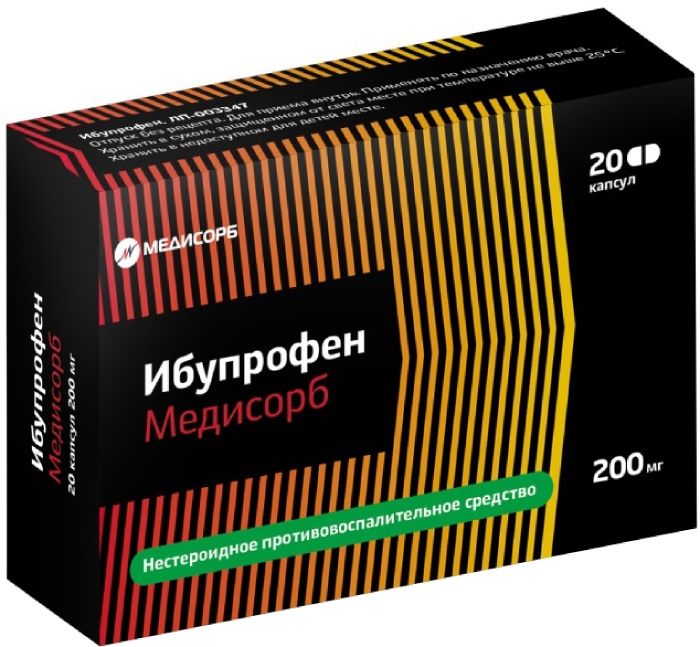
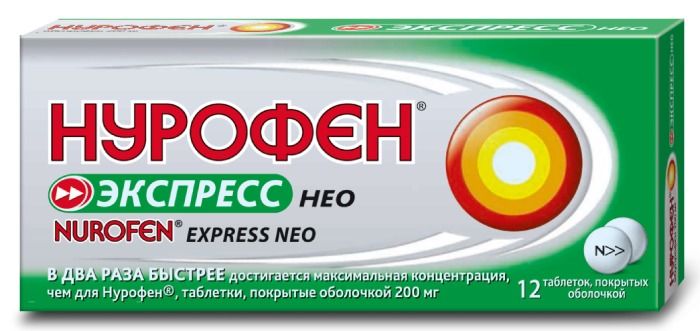
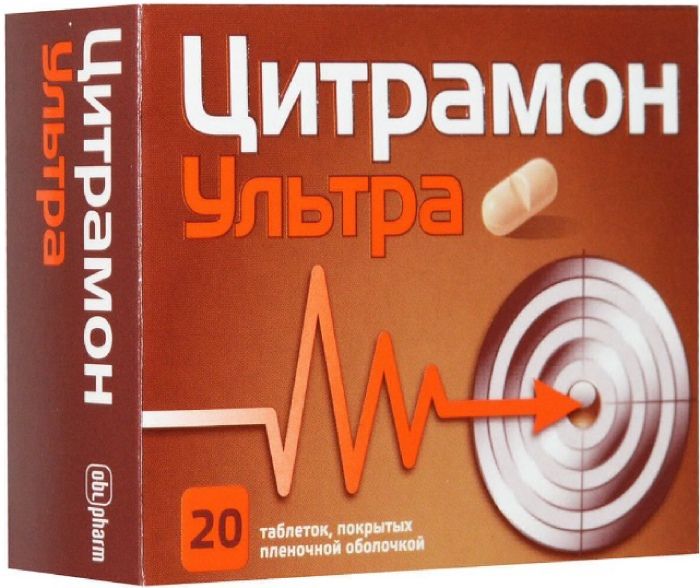

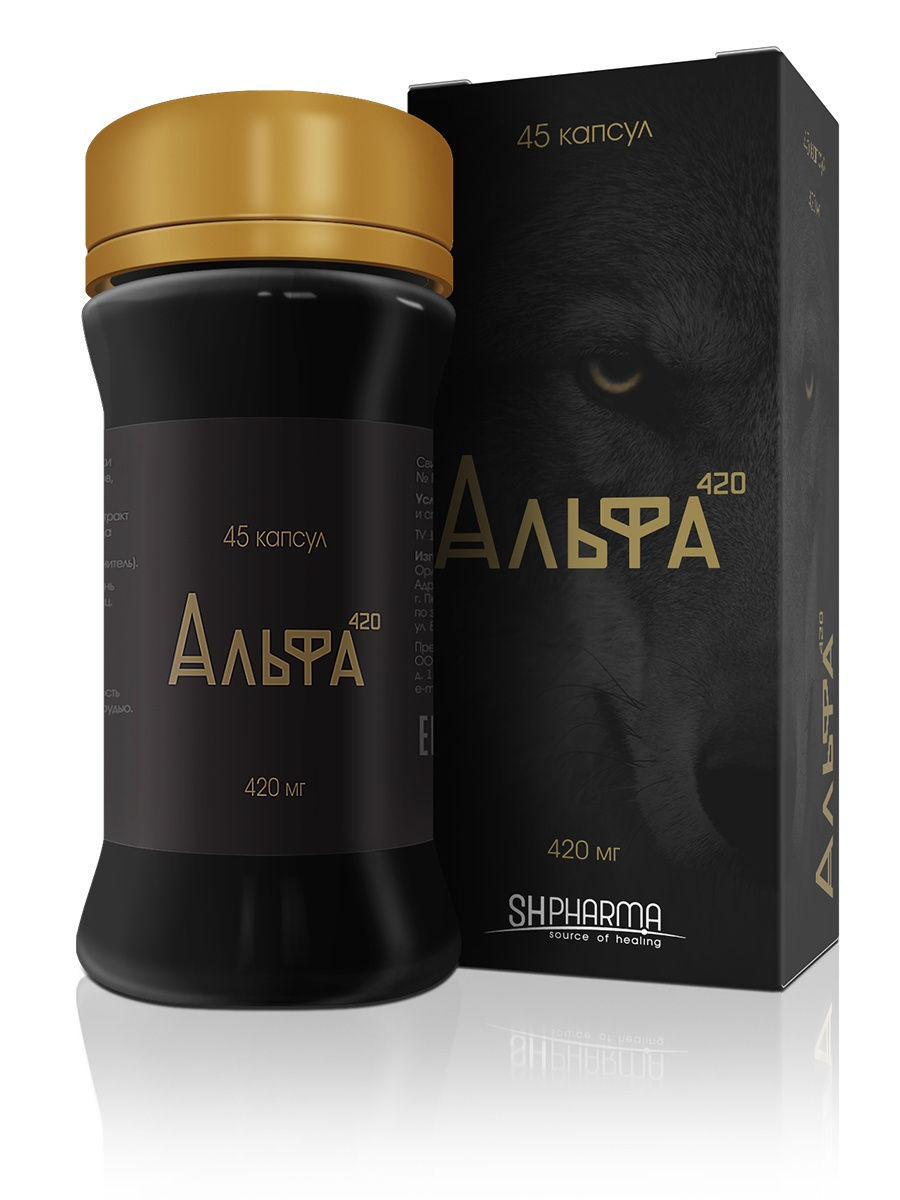

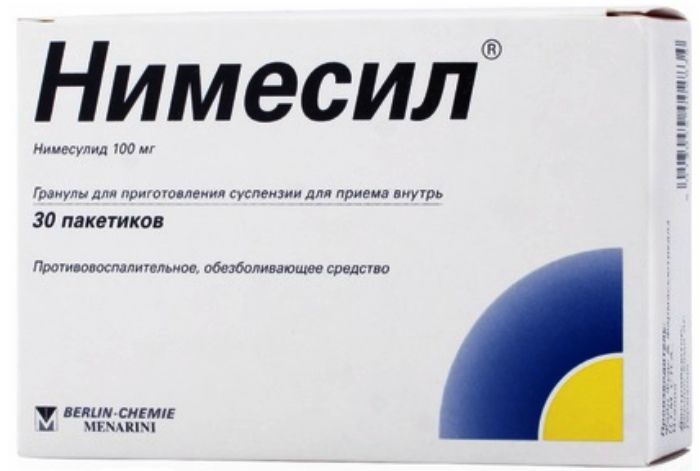
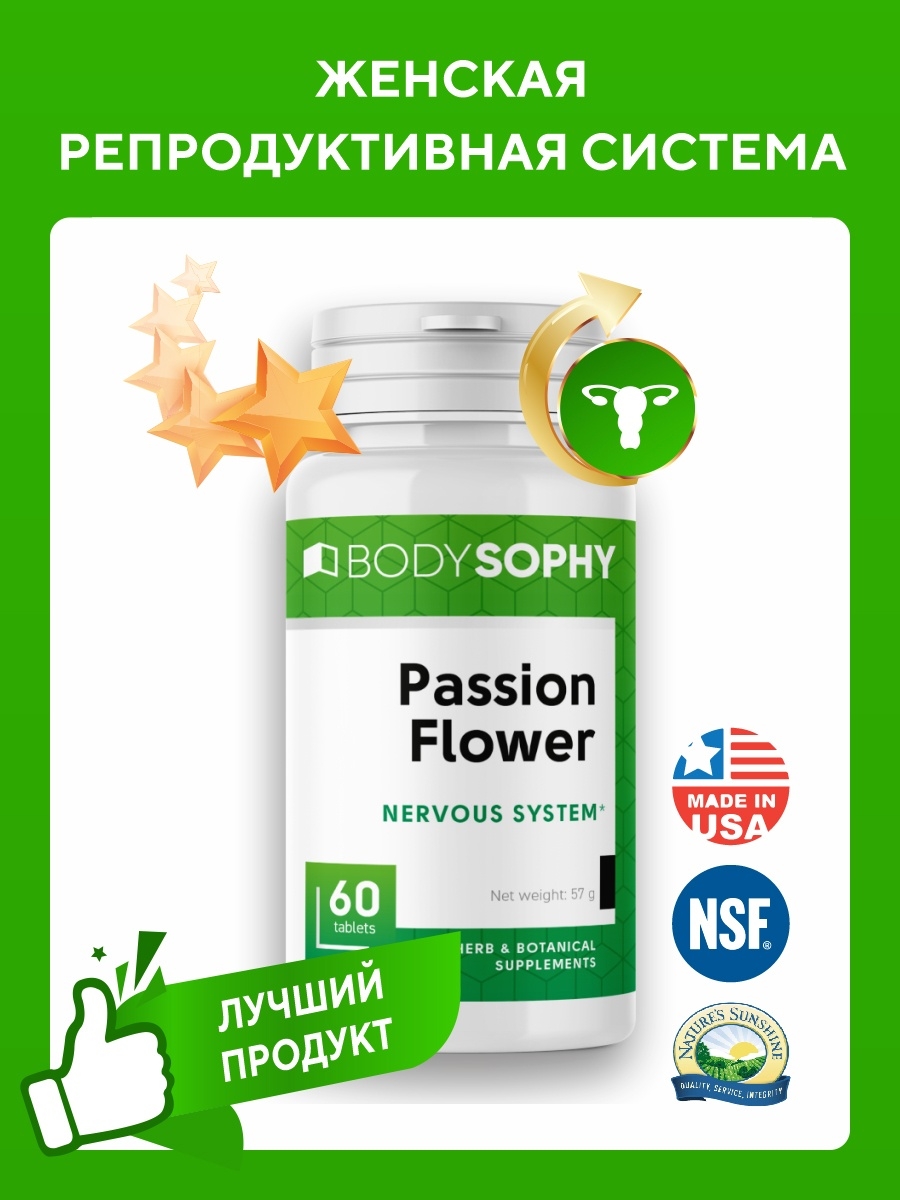




There are no reviews yet.